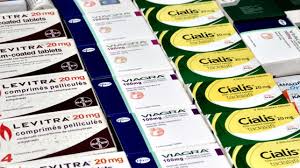
Understanding Antikoagulancia
Antikoagulancia, or anticoagulants, are vital medications used in the prevention and treatment of thrombosis. These agents play a crucial role in managing various cardiovascular conditions by inhibiting the blood clotting process. For a comprehensive overview of Antikoagulancia antikoagulanty, it is essential to understand their mechanisms of action, the conditions they address, and the potential risks associated with their use.
What Are Anticoagulants?
Anticoagulants are substances that prevent blood from clotting too quickly. They are often referred to as blood thinners, though they do not actually thin the blood. Instead, they work by interfering with the body’s normal clotting processes. This is particularly important for individuals at risk of developing blood clots, which can lead to severe health complications such as heart attacks and strokes.
Mechanisms of Action
The various types of anticoagulants work through different mechanisms. Broadly, they can be classified into three main categories:
- Vitamin K antagonists (VKAs): The most common example is warfarin. It works by inhibiting the vitamin K-dependent clotting factors, which are essential for the formation of blood clots.
- Direct oral anticoagulants (DOACs): These newer agents, such as rivaroxaban and apixaban, directly inhibit specific clotting factors (like Factor Xa or Thrombin) in the coagulation cascade.
- Parenteral anticoagulants: This category includes heparin and low molecular weight heparins (LMWHs), which are typically administered via injection. They work by catalyzing the activity of antithrombin, increasing its ability to inhibit clotting factors.
Indications for Use
Anticoagulants are prescribed for various medical conditions, including:
- Deep vein thrombosis (DVT): A condition where blood clots form in the deep veins, usually in the legs, which can lead to serious complications if left untreated.
- Pulmonary embolism (PE): A blockage in one of the pulmonary arteries in the lungs usually caused by blood clots traveling to the lungs from the legs.
- Atrial fibrillation (AF): A heart rhythm disorder that increases the risk of stroke due to the potential formation of clots in the heart.
- Heart valve replacement: Patients with artificial heart valves are often placed on anticoagulants to prevent clot formation on the prosthetic material.
Risks and Side Effects
While anticoagulants are instrumental in preventing thrombotic events, they also carry the risk of serious side effects, most notably bleeding complications. Patients on these medications must be closely monitored, as even minor injuries can lead to excessive bleeding.
| Type of Bleeding | Signs and Symptoms | Actions |
|---|---|---|
| Minor bleeding | Bruising, nosebleeds, or bleeding gums | Monitor and maintain communication with the healthcare provider |
| Major bleeding | Coughing up blood, persistent abdominal pain, or blood in urine | Seek emergency medical attention immediately |
Additionally, patients must adhere to prescribed doses to minimise risks. Factors like age, weight, kidney function, and concurrent medications influence the effectiveness and risk profile of anticoagulant therapy.
Monitoring and Management
Regular monitoring is essential for patients on anticoagulants, especially those on VKAs like warfarin, which require regular INR (International Normalized Ratio) testing to ensure the blood’s clotting ability is within a safe range. This involves balancing the need to prevent clots while avoiding excessive bleeding. DOACs also require monitoring, though the frequency and type can differ significantly compared to VKAs.
Healthcare providers will often utilize patient education about recognizing signs of bleeding, the importance of adherence to therapy, and potential interactions with other medications or foods, particularly with VKAs, which can interact with vitamin K-rich foods.
Conclusion
Antikoagulancia play a crucial role in modern medicine, particularly in the management of various thromboembolic diseases. While they are effective in preventing serious complications, their use requires careful consideration and regular monitoring due to potential risks associated with bleeding. Understanding the mechanisms, indications, and management strategies is essential for both patients and healthcare providers alike.
In conclusion, ongoing research continues to enhance our knowledge about anticoagulants, leading to improved safety protocols and more effective treatments. Collaboration between patients and healthcare providers remains paramount in optimizing therapeutic outcomes and minimizing risks.

